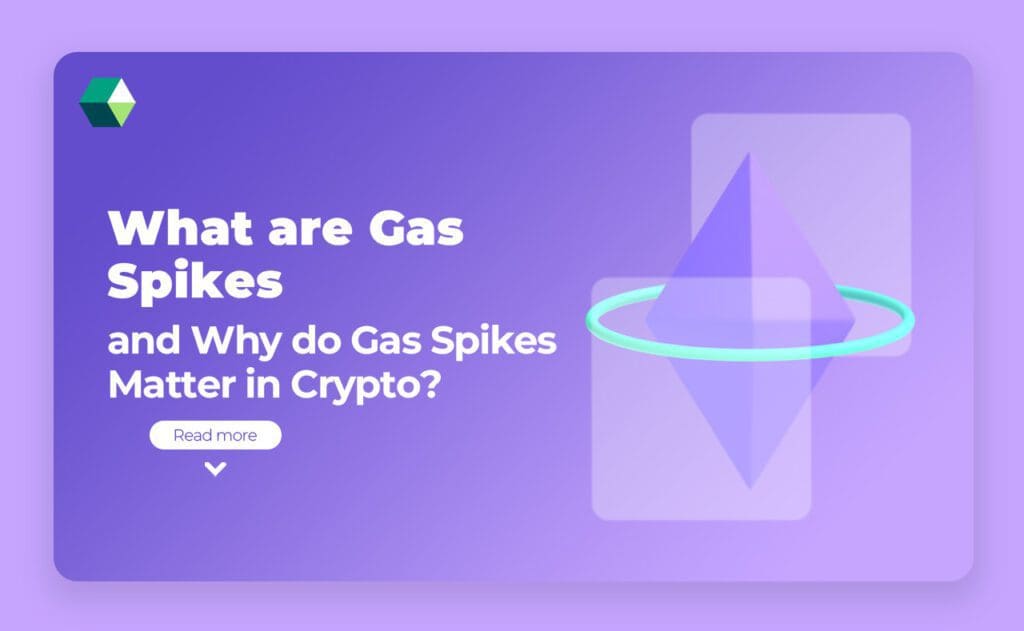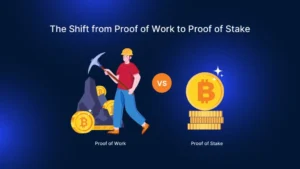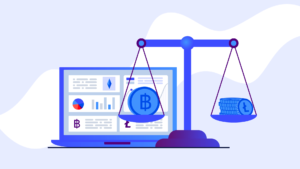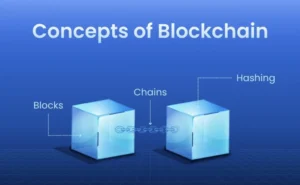
Understanding gas spikes is essential for anyone involved in cryptocurrency, whether you’re a developer, investor, or just exploring the crypto landscape. This comprehensive guide will delve into what gas spikes are, the reasons behind their occurrence, and why they hold significant importance in the cryptocurrency space.
What are Gas Spikes?
Gas spikes are sudden increases in the fees people have to pay to process transactions on blockchain networks, especially on platforms like Ethereum. In the blockchain world, “gas” means the fee needed to send a transaction or run a smart contract. When many people try to make transactions at the same time—like during a big market event or a new token launch—the gas fees can go up quickly. This means it can become expensive for users to complete their transactions, which might lead to delays or stop them from doing what they want. Understanding gas spikes is important for anyone using cryptocurrency, as they can affect how much it costs to make transactions and the overall experience on the network.
Why Gas Spikes Matter in Cryptocurrency?
Gas Spikes are important in cryptocurrency for a few reasons. First, they can greatly affect how users feel about using a platform. When gas fees suddenly go up, it becomes expensive for people to send transactions. This can make them hesitant to use certain platforms and slow down the adoption of cryptocurrencies and decentralized applications (dApps). Second, gas spikes can impact traders and investors. High fees during busy market times can lead to slippage, which means users might pay more for their trades than they expected.
Gas spikes also create chances for miners, as they earn more from the increased fees. However, this can create a cycle where users feel pressured to pay higher fees to get their transactions done quickly. Additionally, gas spikes can complicate cryptocurrency development . They can make it harder for developers to deploy and run smart contracts, leading to delays and increased costs. Overall, understanding gas spikes is crucial because they can affect transaction costs, market behavior, and the health of the entire cryptocurrency ecosystem.
Features of Gas Spikes in Crypto
-
Quick Fee Changes
Gas fees can go up very fast. When lots of people want to make transactions at the same time, the demand for processing those transactions increases. This can cause gas fees to jump suddenly, often in just a few minutes. Users may find themselves paying more than they expected if they don’t watch the gas prices closely.
-
Impact on Transactions
High gas fees can slow down transactions. If the fees are too high, users might wait to send their transactions, which can cause delays. This is especially frustrating for traders who need to act quickly, as pending transactions can lead to missed opportunities.
-
Market Events Cause Spikes
Gas spikes often happen during big market events, like news announcements or new token launches. When many people try to make transactions at once, the demand for gas goes up, leading to higher fees. Being aware of these events can help users choose the best times to transact.
-
Challenges for Users
Sudden increases in gas fees can confuse and frustrate users, especially those new to cryptocurrency. They might not understand why the costs are rising and may feel discouraged from using cryptocurrency platforms. This can slow down the growth of the technology.
-
Effects on Smart Contracts
Gas spikes can make it harder to use smart contracts. If fees are too high, developers may hesitate to create or update contracts. This can slow down new features and limit what decentralized applications (dApps) can do, as users might avoid using contracts that cost too much.
-
More Profit for Miners
While gas spikes can be tough for users, they can be good for miners. Higher gas prices mean miners earn more money from transaction fees, making mining more profitable during busy times. This might bring more miners into the network, which could lead to even higher fees.
-
Gas Price Tracking Tools
To help manage gas spikes, many users use gas price tracking tools. These tools give real-time information about gas fees and help users know when to make transactions. By keeping an eye on gas prices, users can avoid spikes and save money.
Effects of Gas Spikes on Transactions
Gas spikes can affect Transactions in cryptocurrency, especially for companies that offer cryptocurrency development services. When gas prices suddenly go up, it costs more to send transactions. This can lead to delays or even stop transactions from happening. Users might end up paying much higher fees than they expected, especially during busy times when a lot of people are using the network. This can be frustrating for traders and investors who need to act quickly because they might miss important chances.
For developers, high gas fees can make it tough to use smart contracts. If the costs are too high, users may not want to use decentralized apps (dApps), which slows down new ideas and growth in blockchain technology. This can impact Cryptocurrency Development Services and Integration Solutionsbecause new projects might not start if developers are worried about high costs.
Also, if gas prices are high, users might look for other options or platforms, which can affect how existing cryptocurrency development services earn money. Because of this uncertainty, it’s important for developers to find smart ways to manage gas fees. Overall, gas spikes create problems not just for individual transactions but for the whole blockchain world. Both users and developers need to keep an eye on gas prices and plan their transactions and projects carefully.
Tips to Avoid Gas Spikes
-
Monitor Gas Prices Regularly
It’s important to keep an eye on gas prices before making transactions. You can use gas price tracking tools and websites to see current rates. These tools often provide a real-time view of gas fees, helping you spot when prices are lower. By regularly checking, you can time your transactions better and avoid paying high fees.
-
Choose Off-Peak Times
Timing is key when it comes to saving on gas fees. Try to make your transactions during off-peak hours, which are usually times when fewer people are using the network. Early mornings or late evenings can often be quieter periods. During these times, gas fees tend to be lower because there’s less demand for processing transactions.
-
Set a Gas Price Limit
When making a transaction, most wallets allow you to set the maximum gas price you’re willing to pay. This feature helps protect you from sudden price increases. If gas fees spike unexpectedly, your transaction won’t go through until the price drops back to your limit. This way, you can control your spending and avoid surprises.
-
Use Layer 2 Solutions
Consider utilizing Layer 2 Solutions like Optimism, Arbitrum, or Polygon. These platforms are built on top of existing blockchains and often provide much lower gas fees for transactions. Using these solutions can significantly reduce your costs, making them an attractive option for users looking to save money while still benefiting from blockchain technology.
-
Batch Transactions
If you have multiple transactions to make, try to combine them into one. This practice, known as batching, can save you on gas fees since you’ll only pay once for several actions instead of paying separately for each one. Many wallets and decentralized applications (dApps) offer features that allow you to batch transactions easily, making it a practical way to save.
-
Use Gas Saving Features
Some cryptocurrency wallets and dApps come equipped with features designed to optimize gas usage. These may include options to set dynamic gas prices or to choose lower-cost transaction methods. Before making a transaction, check if your wallet has these options, as they can help you minimize fees.
-
Stay Updated on Network News
Being informed about the network you’re using can help you anticipate changes that might affect gas prices. Follow news sources, blogs, or social media channels related to your blockchain. Knowledge about upcoming events, system upgrades, or changes in demand can give you the insight you need to plan your transactions wisely.
Why Choose Nadcab Labs for Gas Spike Management Solutions?
Choosing Nadcab Labs as your cryptocurrency development company for dealing with gas spikes is a smart choice for several reasons. First, Nadcab Labs has a team of experts who know a lot about blockchain and gas fees. They provide customized solutions to help users lower their gas costs. As a leading cryptocurrency development company, Nadcab Labs offers tools and resources that help developers make their apps better. This means users can pay less in gas fees, especially during busy times when prices go up. Their focus on Custom blockchain development services ensures that the apps they create are efficient and easy to use.
Nadcab Labs also keeps track of market trends and changes in gas prices. This helps them give helpful advice and strategies to their clients. By working with Nadcab Labs, users can handle gas spikes more easily and focus on what’s important without worrying about high transaction costs. Overall, choosing Nadcab Labs means getting expert help and solutions that can make your cryptocurrency experience better while reducing costs related to gas spikes.






